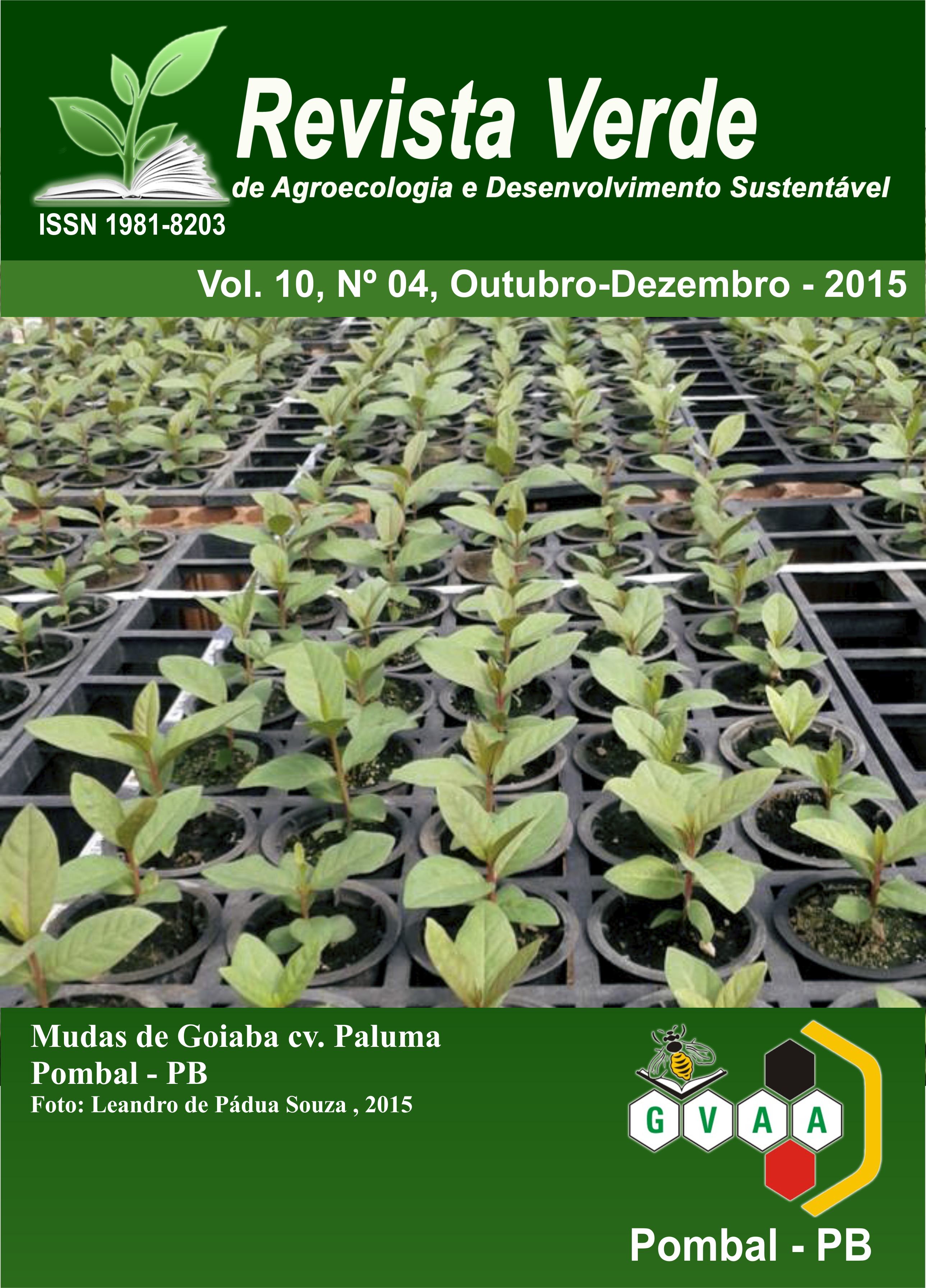Conservação pós-colheita de carambola sob refrigeração com recobrimento de biofilme de gelatina e PVC
DOI:
https://doi.org/10.18378/rvads.v10i4.3653Palavras-chave:
Averrhoa carambola L., Atmosfera Modificada, Revestimento Comestível, Vida de prateleiraResumo
O objetivo deste trabalho foi avaliar a Conservação pós-colheita de carambola com recobrimento de gelatina e PVC. Para isto, carambolas da cultivar ‘Gigante doce’ foram colhidas na maturidade fisiológica, transportadas para o Laboratório de Pós-colheita da Universidade Federal Rural do Semiárido sendo selecionadas quanto a maturação, sanificadas, secas e separadas em três grupos para a aplicação dos recobrimentos: os frutos foram recobertos individualmente com uma solução filmogênica de gelatina a 10% com 1% de glicerol como agente plastificante, recobertos 4 frutos com filme flexível de policloreto de vinila (PVC) de 15μm por bandeja e testemunha (sem recobrimento). Os frutos foram armazenados a 10±1 ºC e 85-90% de UR, avaliados em intervalo de cinco dias durante 20 dias quanto a perda de massa, coloração da casca, firmeza de polpa, sólidos solúveis, acidez titulável, pH e ácido ascórbico. O delineamento experimental utilizado foi inteiramente casualizados, em esquema fatorial 3 x 5, com quatro repetições de três frutos. O recobrimento de PVC foi mais eficiente em minimizar a perda de massa dos frutos de carambola durante o armazenamento refrigerado. Enquanto, o biofilme propiciou a manutenção da coloração verde do fruto por maior período de tempo. Verificou-se aumento no teor de ácido ascórbico e decréscimo na firmeza de polpa dos frutos com o tempo de armazenamento.
Postharvest conservation Star fruit refrigerated with biofilm coating gelatin and PVC
Abstract: The objective of this study was to evaluate the Star fruit post-harvest preservation with coating of gelatin and PVC. For this, starfruit cultivar 'sweet Giant' were harvested at physiological maturity, transported to the Postharvest Laboratory of the Federal Rural University of the Semi-Arid being selected as maturation, sanitized, dried and separated into three groups for the implementation of coatings: the fruits were coanting individually with a film solution of gelatin to 10% with 1% glycerol as plasticizer, covered four fruits with flexible film of polyvinyl chloride (PVC) of 15μm per tray and control (without coating). The fruits were stored at 10 ± 1 ° C and 85-90% RH, valued at five-day intervals for 20 days as the mass loss, peel color, flesh firmness, soluble solids, titratable acidity, pH and ascorbic acid. The experimental design was completely randomized in a factorial 3 x 5, with four replications of three fruits. The PVC coating was more efficient in minimizing the mass loss of Star fruit fruit during cold storage. While the biofilm provided the maintenance of green color of the fruit for a longer period of time. An increase in the ascorbic acid content and decrease in firmness of fruit with storage time.















